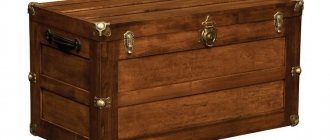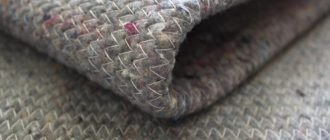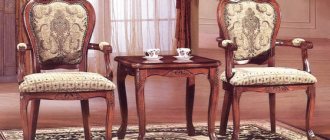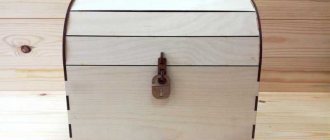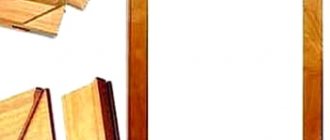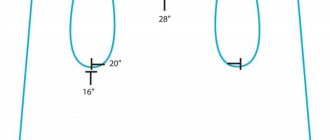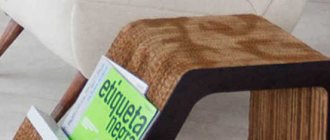What is craquelure, and what materials are needed for it?
What is craquelure, and how to master this technique? Craquelure or crackle is one of the most popular decoration methods. The painting technique involves creating a pattern of thin cracks on the paint surface and the effect of an aged and cracked surface. Vintage style is extremely popular today, and therefore artificial aging in the interior has also found application. However, few people know that the crackling technique appeared in the 18th century in France.
The technology is based on the peculiarity of craquelure varnish. It is applied between two layers of paint of different shades and cracks as it dries. Thanks to this property of the varnish, a network of small cracks appears on the surface in a chaotic manner.
A surface with imitation aging will be appropriate in interior styles such as country or classic. Using the craquelure technique, you can process not only walls, but also doors or furniture.
Despite the apparent complexity, making craquelure on walls with your own hands is extremely simple. Cracks appear on the surface by themselves; the main thing is to follow the correct sequence of actions. The easiest way to create an aged surface is to use water-based paints.
What tools and materials are needed for craquelure done at home?
To age the walls you will need:
- acrylic primer;
- craquelure varnish;
- acrylic paint;
- putty knife;
- sponge, brush;
- protective varnish.
Before making craquelure at home, purchase paint in two colors. It is better to choose contrasting shades, so the cracks on the surface will appear brighter. If you need to create a network of small cracks, you should use a sponge to apply the varnish, since when using a brush, deep grooves will appear on the surface.
Craquelure varnish can be one- or two-component. In the first case, the varnish dries quickly and is easy to apply. Often, when creating a craquelure effect with your own hands, you use a hairdryer to speed up the drying process.
A two-component varnish requires precision from the artist and takes much longer to dry. However, for a normal smooth surface, using a one-component varnish is sufficient.
The DIY craquelure master class will help you master the aging technique to perfection.
How can you get craquelure?
Master classes of novice interior designers most often use special varnishes to create “aged” items.
That's what they're called - craquelure. To emphasize and highlight cracks formed on the surface of an object, ink, oil paints or pastels are specially rubbed into varnishes. Compositions intended for patination give a remarkable effect. The craquelure technique, despite all the new compositions, still cannot compete with natural cracks in works of art. That is why experts can easily distinguish the original antique item from a fake.
Alcohol base (shellac and gum arabic)
- First apply 3-4 layers of shellac. Each layer needs to dry for about 15-20 minutes. The brush can be cleaned with alcohol after use.
- After the last layer dries to a tack, that is, it remains sticky, but does not stain your fingers, apply a layer of gum arabic. Apply with a soft flat brush and then rub over the entire surface using circular movements with your fingers. You need to rub until your fingers stop slipping.
- After 30-40 minutes, a thin network of cracks will appear. Oil paint is best for grouting. Rub the paint into the cracks with a dry cloth in a circular motion. Once all the cracks have been exposed, wipe off any excess with a dry cloth. For the second step, i.e., do not touch the gum arabic with a damp cloth or wet hands. Water will wash away the gum arabic and may spoil cracks that have not yet developed.
- When all the cracks have been rubbed, rinse off the gum arabic under running warm water. The product will become lighter and cleaner. Cover the dried work with any varnish.
When mastering a new technique, do tests every time and be sure to follow the instructions and follow the recommendations. Work only with a dry and clean brush - especially when applying craquelure varnishes - otherwise you risk irreversibly ruining the work. Remember also that you cannot skimp on the second step, because the size and appearance of the craquelure is directly proportional to its quantity.
Water base (Maymeri 753-754)
Water-based craquelure is the most convenient for working with decoupage technique. They also create a thin network of cracks on the object, reminiscent of a cobweb. All components are applied very easily, cracks appear quickly enough, the compositions are washed off hands and tools with warm water and soap.
- Use a flat synthetic brush to apply the first step. Leave for at least half an hour. It does not dry out completely and always remains sticky.
- When the first step is completely clear and tacky, apply the second. Work with a dry, flat, clean brush. You can pour a small puddle and smooth it over the entire surface. Rub it in until it starts to dry out and your fingers stop slipping. Leave the work to dry. After an hour, you will notice thin and transparent cracks appear on the surface.
- To highlight cracks, rub in pigment (pastel, shadow) of the desired shade with a dry cloth or brush.
- Rinse the second step under running warm water and after drying from the water, secure the work with acrylic varnish.
Photo master class on decoupage of a key holder with a door using a pair of craquelure Maymeri 753-754
Depending on how you dry the craquelure varnish, the type of resulting cracks directly depends. Using a hairdryer will speed up drying, but the mesh will be very thin and fine. It is better to leave the work to dry naturally.
In detail: decoupage with craquelure step by step (photo examples)
Similar articles
- How to paint the walls in the kitchen - painting the walls in the kitchen + photo
Whether we like it or not, the time for renovations in the apartment is inevitably approaching, when we roll up our sleeves and have to work hard. Someone has a gap between... - Basics of painting technology: photos, video instructions, stages of execution and necessary tools
Preface When performing painting work, especially on those surfaces that are not intended for subsequent finishing, special… - DIY relief plaster + photo
The so-called relief plaster is a rather effective method of covering surfaces, providing unique textures and colors…
Crackle effect
Have you noticed the network of small cracks on the surface of the paintings? These cracks (loss of integrity of the paint or varnish layer) are called craquelure - from the French word craquelure (crack).
Craquelures on Gioconda's smile. Some even believe that cracks are an integral feature of all old paintings. This is wrong. In most cases, craquelure is the result of a violation of the technology for applying primer, paint layer and varnish. Another reason for their appearance is errors in mixing paints, because previously artists, unlike you and me, did not have the opportunity to buy ready-made paints in the “Artists Supplies” store and made them themselves. Of course, the non-ideal conditions of a work’s “life” also play a role in the emergence of a time grid.
A network of decorative cracks can decorate anything. Today, cracks in paint coatings are not always a headache for restorers. There are formulations on sale that are specifically designed to produce a cracked effect. A network of decorative cracks can decorate anything - from a box to a cake, creating an antique ambience. Crackle can be an addition to decoupage or an independent decor.
Compositions for craquelure and principle of operation
Craquemakers and manufacturers of craquelure varnishes and paints distinguish between 2 main types of compositions: one-step and two-step. This classification, upon closer examination, is not entirely correct, because the number of stages (steps) in each option is greater. And the abundance of different manufacturers, variations in the chemical composition of products and their characteristics creates confusion.
Surface with craquelure To better understand the difference, I will explain the principle. I'll start with a simpler option.
- One-step (single-phase) craquelure
This coating looks like cracked paint, through the cracks of which you can see the tone of the first (base) layer or the base itself - wood, metal, glass, etc., if base paint is not used. The action of the one-step composition for obtaining the crackle effect is based on the different drying speeds of the first (varnish) and second (paint) layers of coating.
First, the item is coated with a layer of base paint, if necessary. Allow the painted surface to dry completely. Then craquelure varnish is applied, the layer should be quite thick. The varnish dries for about 40 minutes (you can speed up the process with a hairdryer), but the drying is not complete: the surface should appear dry in appearance, but there should be an unfinished feel “to touch.”
Options for using different base and finish colors in combination with craquelure. Photo from toolgirl.com The prepared surface is covered with a layer of finishing paint, for example, acrylic. For ease of application, it should be quite liquid, since the surface must be covered in one go. If you move the brush over one place several times, the paint will roll off and the bottom layer of varnish will begin to “reach” behind the brush. Therefore, it is important to choose the right brush and degree of paint thickness: it is better to make a small “testing ground” - a separate paint job. The consistency of the composition also affects the size of the cracks: the thinner the paint, the thinner the cracks.
Craquelure on a wooden surface. Photo from the site 1povagonke.ru The direction in which cracks appear depends on the movement of the brush: if you paint vertically, the craquelure will also be elongated in the vertical direction, and vice versa. If you use a roller rather than a brush, the direction of the cracks will be more chaotic - as in the photo above. To achieve this effect when painting small objects, you can use a swab made from a piece of foam rubber. The shape and size of cracks and the speed at which they appear also depend on the air temperature during drying. Here you can also use a hairdryer to speed up the process.
- Two-step (two-phase) craquelure
In this case, cracks do not form in the paint layer, but in the top varnish coating. Its special composition contains substances that promote uneven drying, tightening of the varnish surface and the formation of cracks.
Two-step craquelure. Photo from the site linakarolina.hemsida24.se Decorative craquelures formed by two-step craquelure varnish resemble exactly their prototype - a network of cracks on antique canvases. The size of the craquelure, as in the case of working with single-phase material, depends on the chemical composition and thickness of the varnish layer, the drying speed, that is, on the temperature and humidity of the air. In this case, you can also try to speed up drying with a hairdryer, but it is better to try on a sample first. Having mastered the technique and selected the necessary composition, you can achieve neat small cracks, like on old porcelain.
Imitation of antique porcelain with two-component craquelure varnish. Photo from the site school-remont.tv At the second stage, the cracks that appear are rubbed over with pigment - oil paint (artistic), bitumen varnish, pastel, metallized powder. Even cosmetic shadows are suitable as a grout.
Cracks formed by two-component craquelure varnish. The pigment “reveals” the craquelure mesh. The choice of grout depends on the composition of the varnish: it is important that the powder sticks only to the cracks and is removed from the rest of the surface. For two-step and one-step compositions, the last stage is the same: the surface is coated with ordinary varnish to secure the decorative effect.
What is one-component craquelure?
Craquelure (“fr” craquelure) translated from French is a crack in the paint layer or varnish in a work of painting. One-step craquelure is used to age simple plain surfaces. To do this, the surface of the object to be decorated is covered with the main background. This is the color the cracks will be.
After the paint has completely dried, a one-step craquelure varnish is applied with simple movements in one direction and dried again. Next, paint of the main color is applied, under the influence of which the craquelure varnish begins to crack, and the background paint appears in the cracks. The finished product can be coated with a clear varnish for acrylic paints for durability.
The concept of one-component implies the use of one product (component) in the decorating process. It is worth highlighting that two-component and one-component compositions can give the effect of simple cracking. At the same time, single-component ones can cause cracks in both varnish and paint.
The general scheme of a one-component pie is as follows:
- The first stage consists of high-quality preparation and priming of the workpiece.
- Then we paint it the color we want to see in the cracks and dry it completely,
- Next we apply craquelure varnish. Let it dry a little (here are the following nuances - the longer you dry it, the smaller and longer the cracks will be).
- Apply top coat paint.
- After it you can patina or varnish.
As a result of these manipulations, the craquelure varnish, due to the difference in surface tension, cracks the paint of the main color and the previous layer of paint is visible in the cracks. For clarity, it is recommended to watch the following video:
Necessary materials
To perform crackle plaster you will need the following materials:
- base paint that will show through cracks;
- craquelure varnish, 100 g of varnish is required for 1 m² of wall;
- textured plaster for decoration;
- dye (acrylic or latex);
- decorative wax;
- special grout for cracks;
- transparent fixing varnish;
- primer, etc.
What to pay attention to
When applying the top coat of paint, you must adhere to the following rules:
- You cannot paint twice in the same place, as cracks begin to form immediately, and it is possible to paint over them.
- At one time, the paint should be applied as evenly as possible, covering the layer so that the underlying paint does not show through.
- The consistency of the main color paint is very important - not liquid, but not thick, so that the craquelure varnish allows it to crack.
- It is important to apply this paint evenly, with equal pressure on the brush. If the pressure is stronger, the paint layer will be thin, the cracks will be long and elongated, thin (when applied with a brush) or small and “scaly” (when applied with a sponge).
To recreate beautiful natural cracks, you need to correctly combine a sponge, a brush, layers of paint and drying the craquelure varnish. And, naturally, the selection of the optimal craquelure composition is no less important. Therefore, the nature of the cracks depends entirely on:
- Craquelure composition.
- The thickness of the varnish layer.
- Drying conditions.
- Consistency of top coat paint.
- Thickness of the top layer of paint.
Errors in preparing the base
- The porous base will absorb the craquelure medium, which will not be able to produce full cracks in the subsequent paint layer.
- Only one, thin or uneven, layer of primer or acrylic paint is applied to the base.
- The compositions are applied with a coarse (bristle) brush.
- A well-prepared base (wood, plaster, plastic, ceramics, etc.) is a surface with two layers of acrylic paint or primer.
- If you want to keep the color and texture of the base, you can coat it with a clear finishing varnish with a glossy or matte effect.
- Each layer of product applied to the base must be thoroughly dried.
Which varnish to choose for one-step craquelure
One-step craquelure varnish is a water-based product that looks like a liquid paste. It dries extremely slowly. And acrylic paint applied on top of such a composition dries simply quickly in comparison. That is why its cracking occurs, provoked by movement in the underlying layer.
Varnish for one-step craquelure
On sale on the shelves of craft stores you can find many jars of one-component compositions from various manufacturers. The most common one-step varnishes that are used are:
- Craquelure varnish - DECOLA (Russia).
- Craquelle Medium - Hobby Line (Germany).
- Krakelierlack - Nerchau company (Germany).
- Krakelee Medium - Marabu (Germany).
- Antique Effekt - Sadolin (Denmark).
- Idea Decoupage - Maimeri company (Italy).
- Krakelierlack DecoArt medium - Rayher (Germany).
- Crackle Medium - Decorfin (Holland).
- Craquelure paint Krakelierfarbe - Glorex (Switzerland).
- One-step craquelure varnish - Ars Hobby company (Russia).
- One-step craquelure varnish - Tair company (Russia).
- One-step craquelure varnish - Aqua-color company (Russia).
- Country Style Crackle - Stamperia (Italy).
- One-step varnish Vintage design “I am a decorator” - Rusart company (Russia).
Unfortunately, each composition gives its own peculiar cracks, and it is unlikely that you will be able to choose the composition that you will definitely like the first time. Therefore, you should experiment with different compositions. Feel them and choose the best one for yourself.
Technology for crackling wooden surfaces
Modern industry produces many compositions for applying craquelure at home with your own hands. Moreover, some of them can be used not only for processing wood, but also for applying “antique” cracks to the surface of products made of plastic or metal. Decorative metal additions to wooden furniture, on which patina or decoupage is complemented with craquelure, will look quite stylish and original.
To apply craquelure cracks, you can buy a one-component crackle varnish or a two-component composition, a set of which is sold in the form of two bottles. For household aging of furniture, a one-component varnish is quite suitable.
Many experienced restorers believe that furniture pieces get a more natural, antique look if cracks are formed using improvised means - vinegar essence, egg white, gelatin and even washing gel. However, for those who want to try their hand at restoration work for the first time, it is better to use a special crackle varnish, sold in household goods stores under the brands “Stamperia” and “Ferrario” (Italy) or “Havo” (Netherlands) called “Creall-Crackle” or "Antique Crackle".
Drying one-step craquelure
It's quite difficult to make a mistake at this stage. To speed up the final result, two options are possible: wait until everything happens on its own, or speed up the process of crack formation using a warm jet of a hair dryer (a hair dryer will also work).
Rules:
- Cracks begin to appear almost immediately, especially if the compounds are applied in a thin layer.
- Large cracks appear first, then they continue to grow and, as a rule, are covered with a network of smaller cracks.
- The heating process speeds up this process.
How to make craquelures with your own hands
The name “two-step” (two-component, two-phase) did not arise because of the second stage - grouting the craquelure with pigments. Initially, two separate components were used to create artificial cracks on the varnish surface: the varnish itself and a coating that tightened the varnish layer when drying. For example, you can coat an object with an alcohol solution of shellac, and use gum arabic (a solution of acacia resin) as the second component. This is how forgeries of famous ancient paintings were made: not only the artist’s work was copied, but also the traces of time on the canvas.
Artificial cracks on furniture. The development of the chemical industry made it possible to simplify the process by combining both components in one bottle, but the name “two-step” remained. Although even today most of the offered range of products for such craquelure really consists of two parts, including shellac and gum arabic. And for one-step, there are not only intermediate craquelure varnishes, but also paint that cracks itself, without varnish as an underlying layer. To create this “antique” effect, decorators use not only specialized products: the craftsmen also have improvised means in their arsenal. Thus, the one-step craquelure effect can be achieved using PVA glue, using it as a craquelure “varnish” or mixing it with finishing paint in a 50:50 ratio. Also, use regular construction varnish, and not from the assortment of art stores - it’s cheaper. A cracked surface will also result if the paint is applied to a layer of egg white, gelatin, washing gel or dishwashing gel.
Creation techniques
The term "craquelure" refers more to painting. This is the name given to small cracks that form over time in paintings and objects of art. This technique is quite interesting and requires experimentation. But in the end it can turn out to be a real masterpiece. And you don’t have to resort to professional tools to create it. Everything can be done at home using improvised means. All you need is desire.
Using egg white
Apply acrylic paint to the surface of the object to which you are giving an antique effect. Preferably two layers. Let it dry a little. After this, apply the egg white using a brush. Let it dry naturally, without using additional heat. And then apply paint in a contrasting color.
Making a composition for craquelure from gelatin
You can make craquelure with your own hands by using regular gelatin to prepare the composition, of which you need to take one tablespoon. The substance is poured into a glass of water, and then it must be left until it swells. The gelatin should then be heated until completely dissolved, after which it should be left until it cools. Then you can begin to carry out work. You need to cover the surface with the composition and wait until everything hardens, and only after that should you apply a second layer of paint.
Next you have to do the same as with any other craquelure. You can apply gelatin, and then paint, the consistency of which should be as thick as possible. After this you need to dry the surface with a hairdryer. However, when performing work, you must follow the rules, which include the need to coat the craquelure with varnish. So, you must follow a technique that involves applying pigment, gelatin and base paint. Afterwards, you can use napkins on which the varnish is applied. This will allow you to get a surface treated not only with a craquelure composition, but also with decoupage. Since gelatin never hardens completely, it can always be washed off with water, but in order to fix the finish, varnish is applied.
Liquid washing gel - an assistant in the craquelure technique
Apply the base color to the surface and leave it until completely dry. Next, use a brush to cover with gel. Moreover, it is better to use a thicker gel. Dilute the paint well and cover the gel with it.
Craquelure using PVA glue
Cover the surface with paint. Let it dry. Then apply the diluted glue sparingly. Almost immediately apply a thicker layer of acrylic paint. Here it is advisable to use a hairdryer to dry the layers. The result is a lot of cracks.
Vinegar for artificial aging
Apply acrylic paint to the surface. Wait until the layer is completely dry. Then apply 9% table vinegar with a sponge. The item must be processed very quickly, because cracks appear immediately.
Furniture varnish and craquelure
Remember the main thing - when using varnish, you must ventilate the room, use gloves and a mask, or do not inhale deeply the vapors of the varnish.
Apply varnish to the product. Let dry for at least 4 hours. When the varnish is still a little sticky, apply a layer of acrylic paint. And then start blow drying. After all these steps, let the item dry for one and a half days. And the “antiques” are ready.
Of course, creating a craquelure surface requires some skill. With every antique effect item you create, your experience will grow. And after a while you will create unique masterpieces. Go for it!
How to make craquelure at home with one-component varnish
First, learn how to make craquelure on a wall with a one-component varnish. Before decorating, the surface is leveled and coated with acrylic primer. There is no need to level the walls to perfection, since craquelure masks small irregularities, chips and cracks. The imitation is usually created on a certain section of the wall, so it is necessary to stick masking tape along its border.
After waiting for the primer to dry completely (about 3 hours), use a flat synthetic brush to apply a dark shade of paint to the surface.
It must be remembered that the cracks will be the same color. After this, the paint should dry completely and the wall area is covered with another layer of paint. Two layers of paint are necessary to ensure that the composition lays down evenly. The color will dry for about 2-3 hours.
If the area with craquelure borders on surfaces painted in other colors, it’s time to paint them too. It is necessary to choose a color for this part of the wall so that it contrasts with the craquelure background.
These DIY craquelure photos show how a one-component craquelure varnish is applied to the surface:
For this you will need a flat brush with synthetic bristles. If you decide to use a sponge, it should be a comfortable size, but not too big. When applying varnish, you need to move from bottom to top. The varnish is applied with a sponge using blotting movements, also from bottom to top. Brush strokes should be not only vertical, but also horizontal. To diversify the pattern, strokes can be applied in different directions, for example diagonally. In this case, the cracks will be vertical, horizontal and diagonal.
The thicker the varnish layer, the brighter the cracks will appear. If the varnish is applied in a thin layer, the cracks, resembling a cobweb, will not be so noticeable. The varnish can dry from 30 minutes to 2 hours - it depends on its type and the level of humidity in the room.
After the varnish has dried, the surface is painted with a contrasting color using a moderately damp bristle brush. The paint layer should be uniform over the entire surface. It is necessary to paint it entirely, otherwise the craquelure will not appear. The coating must be applied quickly. If the wall area is large, it is recommended to apply vertical stripes of equal width to it, working carefully and making sure that there are no layers or drips of paint at the joints.
As soon as the paint begins to dry, cracks will appear. To speed up the drying process, you can use a hair dryer or halogen lamp. Complete cracking of the paint will occur within 24 hours.
To emphasize the texture of an aged section of the wall, you can paint a border along its edge with gold paint. In this case, individual places are not painted over, which also creates the effect of antiquity.
To give the treated surface strength, a colorless acrylic varnish, preferably matte, is applied to it. Surfaces painted with a sponge are covered with decorative varnish. To give additional attractiveness to the finishing layer, natural wax is used.
Now that you have learned how to make craquelure with a one-component varnish, practice on a small surface and then try to master a more complex technique.
Description and technique of applying craquelure varnishes for decoupage
Varnish with a craquelure effect can be one-step or two-step. One-step (or one-component) is applied between contrasting layers of paint. Two-step (two-component) - on a layer of shellac. The composition must be applied to the surface of the objects to be decorated correctly. This is done, if possible, with a synthetic brush. Shellac should not be shaken before application to prevent air bubbles from forming.
There should be no dust in the room. It needs to be well ventilated before work. The resulting cracks on the object can be covered with dark-colored paint and silver or gold-colored powder. Excess is removed with a swab moistened with vegetable oil. At the end of the work, the surface of the product is thoroughly wiped and coated with a final protective acrylic varnish.
Cracks form in the direction of brush movement. To obtain a craquelure mesh, you need to use varnish using small strokes.
Read on our website
Decoupage a stool with your own hands Decoupage a stool can give it a second life and make an outdated item in demand again. Chair design can...
Tips for creating craquelure
- To create a spectacular coating, purchase coatings in contrasting shades . Successful combinations: white-black, pink-black, black-silver; Red Black;
- When choosing a cracking varnish, read the instructions . The fact is that some varnishes crack only with a special base, which is usually included in the kit. If there are no instructions, the background can be any brand of gel polish;
- Apply the craquelure varnish as thinly as possible . Only in this case will the coating crack properly;
- do not try to exactly repeat designs from the Internet - craquelure forms a unique pattern each time, the probability of repetition of which is almost zero. However, you can still repeat the idea for the backing, for example, make it with a gradient effect.
How to use craquelure varnish: rules
The undoubted advantage of two-component craquelure varnish is the offer of ready-made decorative color solutions for the base and finishing layers and a beautiful crack pattern.
The first can contains paint (base layer), the second contains a craquelure composition. To achieve a sophisticated result on furniture of neutral tones, colors of similar, component shades will suit you.
Since using craquelure varnish is not so easy, you can familiarize yourself with the following rules:
- First, prime the surface thoroughly.
- Then spray paint from the first can from a distance of at least 10 cm.
- After the coating has dried (the drying time of the paint is recommended by the manufacturer), apply the composition from the second can. As the top coat of paint dries, cracks will begin to appear.
The peculiarity of working with a one-step craquelure coating in an aerosol can is that the composition is sprayed onto a surface painted with acrylic paint when the paint has not yet dried.
Life hack: how to create craquelure without special varnish
If you don’t have cracking varnish on hand, but you really want craquelure, use foil for this. Since craquelure is a cracking effect, using foil you can create a similar pattern, and even with a metallic sheen.
Prepare for work:
- base and top, preferably of the same brand;
- colored gel polish;
- a piece of foil. For one manicure, a fragment of 10 by 10 is enough. By the way, to diversify the design, you can use foil of different colors or with a holographic effect.
Before creating craquelure, do a manicure - hardware, edged or any other one that you usually do.
Unedged European manicure
- Apply a thin layer of base to a grease-free nail and dry it in a lamp;
- Apply colored gel polish on top, also drying for 30 to 60 seconds, depending on the type and power of the dryer. If the color is not dense, apply a second layer;
- Without removing the sticky layer from the gel polish, chaotically stamp the foil with quick stamping movements. Do not press it too hard so that the fragments end up with cracks;
- Cover your nails with top coat and dry in a lamp.
Do not forget to moisturize the cuticle with oil after the procedure and do not wash your hands for 1-2 hours after the procedure.
In addition to ordinary foil, which every craftsman has in his arsenal, you can find special foil with a craquelure pattern on sale.
In order to transfer the drawing, you will also need additional glue for foil. It is offered by many brands, including Formula Pro.
Instructions:
- On the prepared background in the form of gel polish or varnish, use thin lines to apply a pattern of future cracks with glue;
- Press the inside of the foil to the nail and tear it off with a sharp movement;
- Seal the resulting design with a topcoat and dry it in a lamp.
Nail decorations - an overview of all types
Reasons for the different sizes and nature of cracks in one-component craquelure
The size and nature of cracks in crackle depends on many factors. If you apply it with a sponge, you will get a chaotic mesh, if you apply it with a brush, then the cracks will seem to “go” in the direction of the brush stroke.
The size of cracks in craquelure depends on the thickness of the varnish layer and on the time after which paint will be applied to it ( the damper the craquelure and the thicker the applied layer, the larger, rougher and deeper the crack, respectively, the thinner the layer and the more dried it is, the smaller and more delicate it turns out to be a network of cracks ).
It is advisable to use only acrylic matte paints . For example, glossy and metallic paints are very heavy and the varnish simply under their weight may not show cracks.
After finishing work, brushes and sponges should be rinsed with water.
Decoupage with craquelure on a bottle step by step
To create beautiful decoupage, you will need certain materials and tools; materials can be purchased both in regular stores, for example, acrylic paints and primers, and in specialized stores, in particular, craquelure varnishes.
Before creating decoupage with craquelure on a bottle, it must be degreased
You will also need soft wide brushes, sponges, etc., and a surface on which all the work will be done, for example, bottles:
- The bottle should be washed, all stickers should be removed, then it should be primed and wait until the primer dries. After this, it should be painted with acrylic or water-based paint of the selected color; the paint can be applied either with a sponge or with a brush.
- It is best to apply a one-component layer of varnish using a sponge; you need to wait until the varnish dries and apply the paint in an even, wide layer. When the paint has dried, the bottle should be coated with a layer of regular varnish.
- A design from a napkin or from a print should be sprayed with hairspray, the film is straightened, and the design is applied with the front side to it. The film together with the napkin is applied to the bottle, after which air bubbles are expelled from under the napkin. Afterwards, the film is removed, and the design is covered with aquatic, and then the entire bottle in several layers. You can make a large number of such beautiful bottles.
When a person learns to use all the techniques of decoupage with craquelure, and is confident in applying paints, varnishes, gluing images and maintaining a certain style, he will be able to create many interesting and beautiful works.
Textured or craquelure paste
In addition to classic craquelure varnishes, you can find in stores many products for creating cracks called structural paste (craquelure paste or paste for creating frescoes). It's kind of like artistic putty.
It is more convenient to apply craquelure paste using a palette knife or spatula. The result is beautiful cracks that imitate an antique surface. To create such cracks, it is recommended to use a hot hair dryer immediately after application. It promotes quick drying.
Afterwards, the product can be painted with water-based acrylic paints; the cracks can remain in the same color as the overall tone or can be rubbed over with contrasting pigments. The drying time and the size of the cracks depend on the thickness of the layer - the thicker, the longer and larger the cracks.
What errors can occur during application?
Apply the varnish using a wide brush in even strokes. You cannot brush the brush twice over the same area. Under normal temperature conditions, the size of cracks depends on the thickness of the varnish layer. The varnish dries in about 30 minutes. You can't overdry it. A poorly applied layer must be washed off and reapplied. This is easy to do if the varnish is water-based. To get small cracks on the surface, it is better to use a sponge. You need to dry the varnish until your finger sticks to it, but does not get dirty. Cracks do not always appear on a completely dry layer.
When using a hairdryer, it is not recommended to direct a strong stream of hot air onto the product. With a thin layer the cracks are smaller, with a thick layer they are larger.
Acrylic paint is selected with a matte surface. A one-component varnish should be placed between its two layers. After work, brushes are washed with turpentine, then with water and laundry soap.
Craquelure using gelatin
Craquelure using gelatin is a fairly popular method, but it rarely works the first time. For gelatin craquelure, take a tablespoon of gelatin and dilute it in a glass of cold water. Leave to swell, then heat until completely dissolved.
Apply the cooled gelatin mass in random order to the decorative item and let it dry for 10-15 minutes, you can use a hairdryer, but do not overheat. Next, carefully cover with paint, making sure that the gelatin does not reach behind the brush, especially in places where the layer is very thick. Dry and coat with acrylic varnish.
Recommendations for the craquelure technique
If you use this technique (craquelure), preparing the composition with your own hands is quite simple. But it is also important to properly prepare the surface. For example, if a mixture based on egg white is used, then the surface must first be coated with a primer. Only then is a layer of acrylic paint applied. Varnishing will be required to prevent the protein from being absorbed. Painting can be done in any order, and drying without using glue should last a sufficient amount of time.
The composition for craquelure can be made from different materials, and you do not have to spend money on purchasing factory-produced mixtures, which are quite expensive. This is especially true when decorating a surface of an impressive area.
